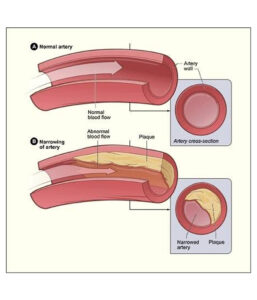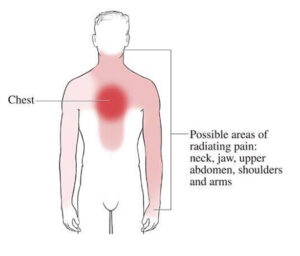Quick facts you should know about Coronary Artery Disease (CAD)
Here are the top 5 questions answered about Coronary Artery Disease, that every adult should know. This could mean the difference between extended hospitalization and simple steps to steer clear of poor heart health, costs and tension.
What is Coronary Artery Disease?
Blood vessels that supply blood, oxygen and nutrients to the muscles in the heart are called coronary arteries. Cholesterol gets deposited as plaque in the walls of the arteries over a period of time, and this buildup inside arteries causes it to narrow. Consequently, the flow of oxygen rich blood and nutrients to the heart muscles reduces and in certain circumstances, may also result in a complete blockage. This blockage results in heart attack. CAD, acronym for Coronary Artery Disease is also known as Ischemic Heart Disease.

Q.1 What are the common symptoms?
Commonly experienced symptoms include the following:

• Angina – This is one of the most frequently occurring symptoms. If you have CAD you may have pain or discomfort in the chest that is periodic in nature. This may be experienced when you indulge in some physical or strenuous activity, and resolves with rest or medication for chest pain. This occurs because the natural flow of blood to the heart is reduced or blocked.
• Dyspnea – This refers to shortness of breath when you take up even simple physical activities.
• Fatigue and weakness – You may feel abnormally tired, in a manner that was not experienced earlier.
Q.2 Is it possible to screen the condition at an early stage?
Yes, it is possible to screen the condition and take appropriate treatment to pre-empt and prevent serious outcomes. Screening includes any of the following – Angiography (also known as angiogram), ECG/EKG, Echocardiogram, Exercise stress test, Nuclear Test, Heart CT Scan. The actual test(s) will depend on the initial assessment of the patient, apart from the medical and family medical history.
Q.3 What are the different procedures to treat CAD?
The procedures for treating CAD depends on the condition of the patient. For instance, the patient may be advised Coronary Angioplasty or Coronary Artery Bypass.
Angioplasty is a minimally invasive procedure and involves the insertion of a balloon that widens the artery that has narrowed due to the plaque buildup. Depending on the severity, the surgeon may also insert a stent (this is a small metallic mesh) which reduces the risk of the artery clogging again in the future.
A coronary artery bypass surgery is a major procedure that involves opening up the chest, and bypassing the affected artery. This is performed by removing a healthy section of a blood vessel either from the chest or from the leg, and using this to introduce a new route, bypassing the clogged or narrowed artery.
Q.4 Is angioplasty performed under general anesthesia, and how long does it take for recovery?
The actual procedure of angioplasty takes about an hour, and involves a small incision either in the leg or the arm. This procedure does not typically require general anesthesia, and the time to recovery or return to normal routine is generally not more than 3 or 4 days.
Q.5 Which option is the best?
It is more about picking a suitable option. If detected/screened early, angioplasty will be a better choice and will help prevent serious consequences. The patient needs to adopt a healthy lifestyle, with necessary periodic follow up screening.
However, in the event the patient has multiple blocks, or if the left main coronary artery is clogged, the suitable (and often, only) option would be bypass surgery. Here again, this could pose a problem for geriatric patients or patients who are extremely weak.
Therefore, the choice of procedure depends to a large extent on severity of block(s). If you do not have other medical conditions or complications, and if the clogging is not extensive, you could prevent complications with a simple angioplasty.
Need more information from a cardiologist? Get in touch here.
Are you looking for specialist diagnosis and cardiac care? Lords Hospital in Trivandrum in association with Karunya Hrudayalaya, offers state-of-the-art diagnostics and cardiac care, including angiography and angioplasty. Benefit from specialized services and be in control of your heart health.
 Chackai, Anayara P. O., Trivandrum - 695 029
Chackai, Anayara P. O., Trivandrum - 695 029 Emergency & Trauma Care
Emergency & Trauma Care

